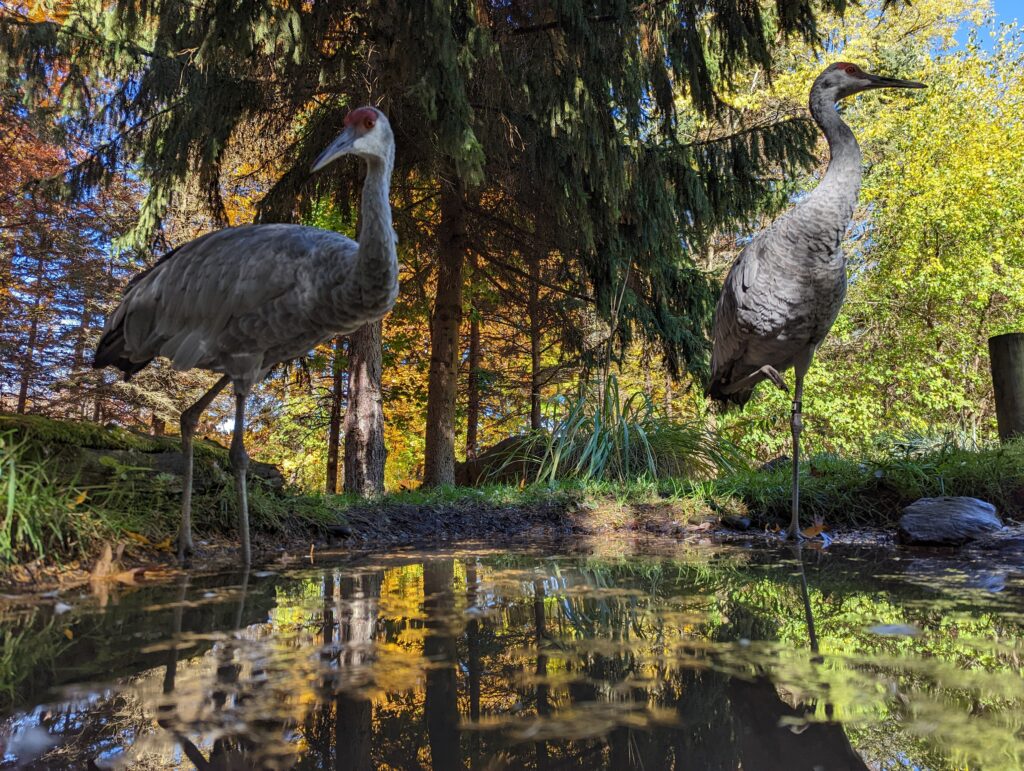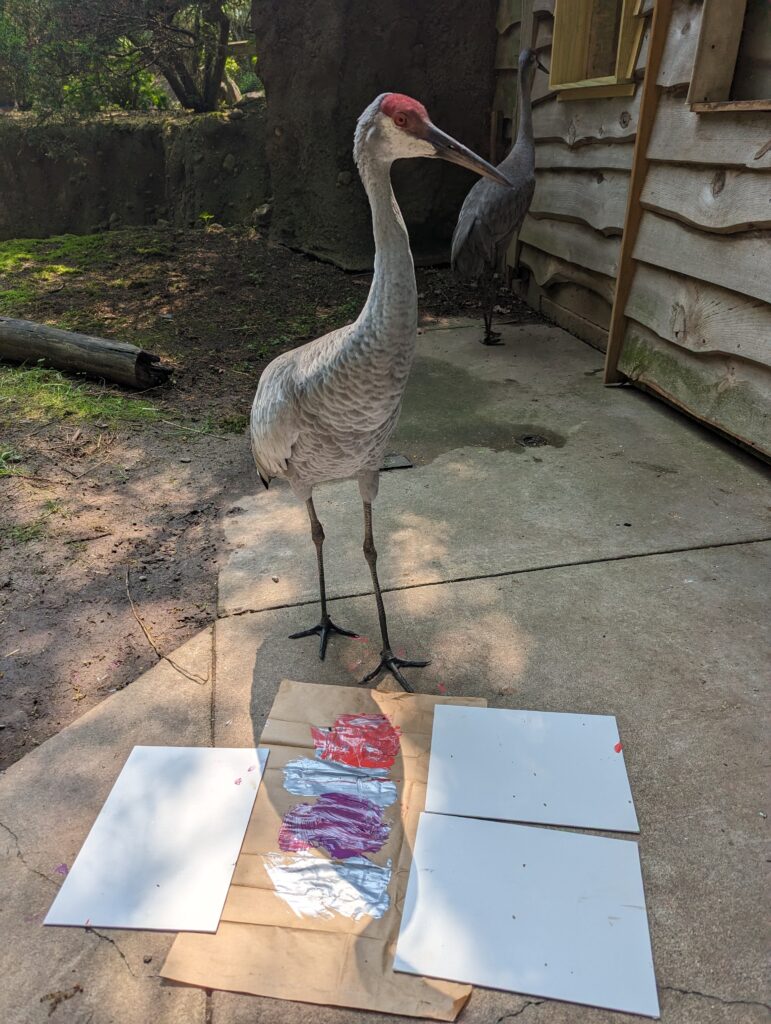The sandhill cranes at the Seneca Park Zoo; photos courtesy Seneca Park Zoo

Standing between three and five feet tall with a wingspan of almost seven feet wide is the sandhill crane. Sandhill cranes are a grayish-brown color except for their foreheads and around their bright red eyes. These cranes, found all over North America, are just one of fifteen species of crane in the world.
A fun fact about cranes is that they mate for life, meaning Seneca Park Zoo’s sandhill cranes, Niles and Rizzo, will be together for the rest of their days.
Niles, the male crane, is nine years old and has been living at the zoo for almost five years. Although Rizzo has only been at the zoo for two years, she is a lot older than Niles. In fact, Rizzo is nineteen years old, which is pretty amazing because the average age for sandhill cranes is between fifteen and twenty years old. Seneca Park zoologist Brian Sheets says that Rizzo shows no signs of slowing down and will live for another ten years.
Though these two birds are a couple, they have completely opposite personalities.
“Rizzo is very outgoing and trusting compared to Niles. With almost all wild animals, you can’t quite get that complete trust factor, it’s just their survival instinct,” Sheets says. “Niles has been pretty standoffish since we’ve got him. Miles never really trusted us, but he has improved. He comes closer to us now because [Rizzo] showed him the way.”
Sheets says they don’t know where Rizzo came from before arriving at the zoo. He thinks she must have been injured at a very young age, allowing her to imprint on humans earlier. Imprint is just another word for forming a close bond or connection with someone. Regardless of where Rizzo came from, Sheets says she was great in a summer program hosted by the zoo where families could get up close to Rizzo and watch her eat bugs out of piles of straw.
Generally, cranes can be found all over North America in marshy areas where they can walk along shallow water to hunt fish, snails, and other small creatures. Cranes are omnivores meaning they eat plants and animals. Rizzo and Niles eat small frogs, grain, berries, and whatever insects they can find.
Sheets says cranes typically stop in Platte River, Nebraska when they migrate and sometimes there are almost half a million of them on one stretch of river. The Platte River is covered in sand hills, which is where these cranes get their name from. Sadly, Rizzo and Niles cannot migrate or fly like other sandhill cranes because they could hurt themselves.

Birds have hollow bones, so once they break a bone that bone will never heal. When a wild bird breaks a bone, life in the wild becomes extremely hard—that’s why rescue centers like Seneca Park Zoo are so important. Rescue centers and zoos give injured birds and other animals a second chance at life.
“We don’t know what their injuries are, but we do trim their feathers; at least we trim Niles’s, who can fly a short distance. He’s flown over into the sea lions pool a few times, we had to go and retrieve him,” Sheets says. As a substitute for migration, when it gets cold, the zoo keeps the pair in a heated indoor space with a couple of windows. After a few of days of being indoors, Sheets says they will turn down the heat so the birds can start to adjust to colder temperatures. Once they’ve adjusted, the birds can return to their outdoor enclosure to stretch their legs.
“They’re fairly easy to deal with because we can go in [their cages]. It’s easier to influence them to move around or give them something to do or talk about them to the public because they are right there with us and can’t really hurt us,” Sheets says.
For the crane enclosure, the zoo created a smaller version of where cranes would usually be found in the wild. It’s a big stretch of land surrounded by a moat of water to keep the cranes from visiting the sea lions. The zoo also built wallows of mud for the cranes to have that marshy area but then the island also gives them the option of dry land surrounded by trees.
“Sometimes we give them live fish, but they usually just kill them,” Sheets says. “They have a nice space though it’s more than enough for the two of them.”
As the weather starts to get warmer, you’ll be able to get a better view of all the animals who enjoy warmer weather. So plan a day in the spring time to go see Rizzo and Niles in their little home at Seneca Park Zoo.
Views: 0






